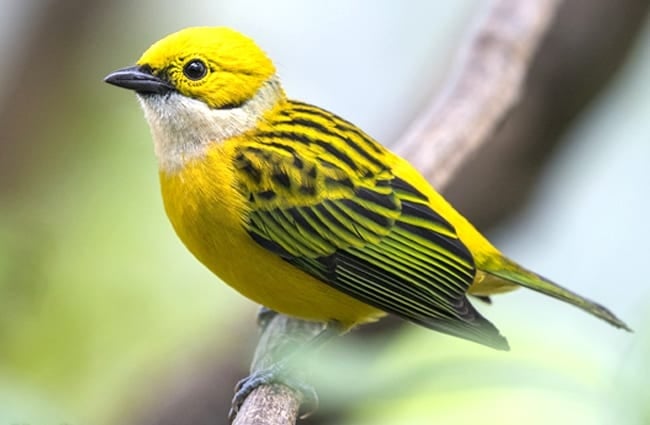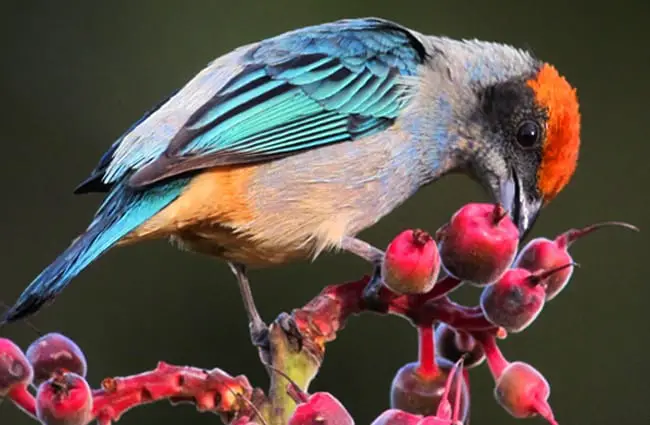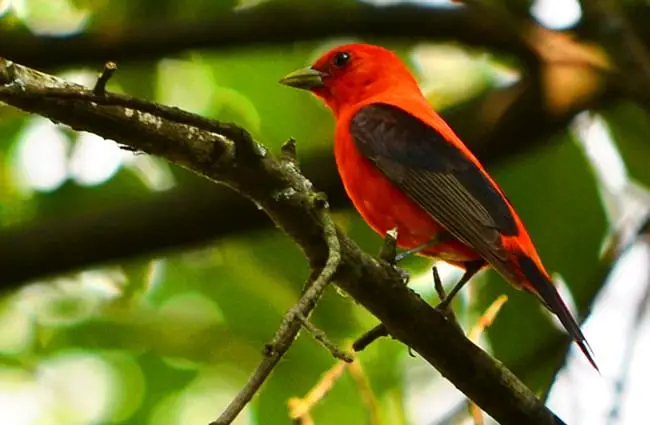What are Tanagers? A Colorful Introduction
Tanagers represent a vibrant and diverse group of birds within the family Thraupidae, native to the Americas. Renowned for their stunning plumage and melodious songs, these birds have captivated ornithologists and birdwatchers for generations. There are over 400 different species of tanager, exhibiting a remarkable range of colors, sizes, and habitats. From the lush rainforests of South America to the woodlands of North America, tanagers play a crucial role in their respective ecosystems.

A Global Distribution and Habitat Diversity
The vast majority of tanager species reside in the Neotropics, specifically Central and South America. They occupy a multitude of habitats, including cloud forests, rainforests, deciduous woodlands, and scrubland. Some species prefer specific elevations, while others are more adaptable. In North America, a smaller number of tanager species breed, primarily in deciduous and mixed forests. The Scarlet Tanager, for example, is a common sight in eastern North American forests during the breeding season. Western Tanagers favor coniferous forests and open woodlands of the western United States and Canada.
Tanager Diet and Foraging Behavior
Tanagers are primarily frugivores and insectivores, with their diet varying by species and season. Many seek fruits, berries, and nectar, playing a vital role in seed dispersal. During the breeding season, insects and caterpillars become essential for providing protein to developing chicks. Some tanagers forage in mixed-species flocks, increasing efficiency and protection from predators. They frequently glean insects from leaves and branches or catch them in mid‑air. The Silver‑throated Tanager, for instance, is known to defend fruiting trees, establishing dominance over other birds.

Detailed Look at Tanager Biology
Evolutionary History and Taxonomy
The evolutionary history of tanagers is complex and continues to be refined through ongoing research. Traditionally, the family Thraupidae was considered relatively homogenous. Recent molecular studies have revealed a surprising degree of phylogenetic diversity, suggesting that the family may result from adaptive radiation. This means that a single ancestral species diversified rapidly into a wide array of forms, each adapted to a specific ecological niche. Some species formerly classified as tanagers have been moved to other families, highlighting the importance of molecular data for conservation planning.
Mating and Reproduction
Tanagers exhibit a range of mating systems, from monogamy to polygyny. Most species are territorial during the breeding season, with males defending a territory to attract females. Elaborate courtship displays are common, involving vocalizations, plumage displays, and aerial acrobatics. Females construct cup‑shaped nests from twigs, leaves, and moss. Clutch sizes typically range from two to five eggs. Both parents share incubation and chick‑rearing duties. The Summer Tanager, for example, is known for its distinct song and vibrant red plumage, which help attract mates.

Ecological Role and Inter‑Species Interactions
Tanagers play critical roles in their ecosystems. As frugivores, they disperse seeds, aiding forest regeneration. Their insectivorous habits help control insect populations, benefiting plant communities. They also serve as prey for raptors, snakes, and mammals. Tanagers often interact positively and negatively with other bird species. They join mixed‑species flocks for foraging and increased vigilance, but they can also compete for food and nesting sites. The Flame‑rumped Tanager is especially notable for its bright coloration and its contribution to cloud‑forest dynamics.

Tanagers and Human Interactions
Cultural Significance
Tanagers have long held cultural significance for people in the Americas. Many indigenous cultures view these birds as symbols of beauty, vitality, and good fortune. Their vibrant plumage inspires artistic expression in paintings, textiles, and folklore. Their songs are incorporated into music and storytelling. In some cultures, tanager feathers are used in ceremonial attire and religious rituals.
Human Impact and Conservation Status
Many tanager species face increasing threats from habitat loss, deforestation, and climate change. Forest destruction for agriculture, logging, and urbanization reduces their breeding and foraging grounds. Climate change alters habitats and disrupts breeding cycles. Several species are listed as threatened or endangered by conservation organizations. Protecting habitats, promoting sustainable land management, and mitigating climate change are crucial for their long‑term survival. The Scarlet Tanager, while not currently endangered, experiences population declines in some areas due to habitat loss on its wintering grounds.

Finding and Observing Tanagers
Birdwatchers can increase their chances of spotting tanagers by targeting the preferred habitat of the species. Exploring forests, woodlands, and gardens during the breeding season is rewarding, as males display and sing. Binoculars and a field guide aid identification. Listening for distinctive songs and calls is also helpful. Many ecotourism operators offer guided birdwatching tours in areas abundant with tanagers.
Caring for Tanagers in Captivity
For zookeepers and aviculturists, providing a stimulating and enriching environment is paramount. Aviaries should be spacious, with natural vegetation, branches, and perches. A varied diet of fruits, insects, and seeds is essential. Opportunities for foraging and exploration help prevent boredom and maintain physical and mental well‑being. Careful monitoring of health and behavior is crucial for early detection of problems.

Intriguing Tanager Facts
- Tanagers possess specialized tongues that help them extract nectar from flowers.
- Some tanager species mimic the songs of other birds.
- Males of many tanager species undergo a complete plumage molt each year.
- Certain tanagers use mud to construct elaborate nests that provide insulation and protection.
- Golden‑hooded Tanagers are known for their vibrant golden coloration and unique foraging behavior.
- Western Tanagers exhibit sexual dimorphism, with males and females displaying different plumage patterns.
- Tanagers are highly adaptable, thriving in a wide range of habitats.


From their stunning beauty to their ecological importance, tanagers represent a fascinating group of birds. Understanding their biology, behavior, and conservation status is essential for ensuring their survival for generations to come. Their vibrant presence enriches our planet, reminding us of the interconnectedness of life and the importance of preserving biodiversity.

![Red Angus Closeup of a beautiful Red Angus cowPhoto by: U.S. Department of Agriculture [pubic domain]https://creativecommons.org/licenses/by/2.0/](https://animals.net/wp-content/uploads/2020/03/Red-Angus-4-238x178.jpg)




![Red Angus Closeup of a beautiful Red Angus cowPhoto by: U.S. Department of Agriculture [pubic domain]https://creativecommons.org/licenses/by/2.0/](https://animals.net/wp-content/uploads/2020/03/Red-Angus-4-100x75.jpg)

